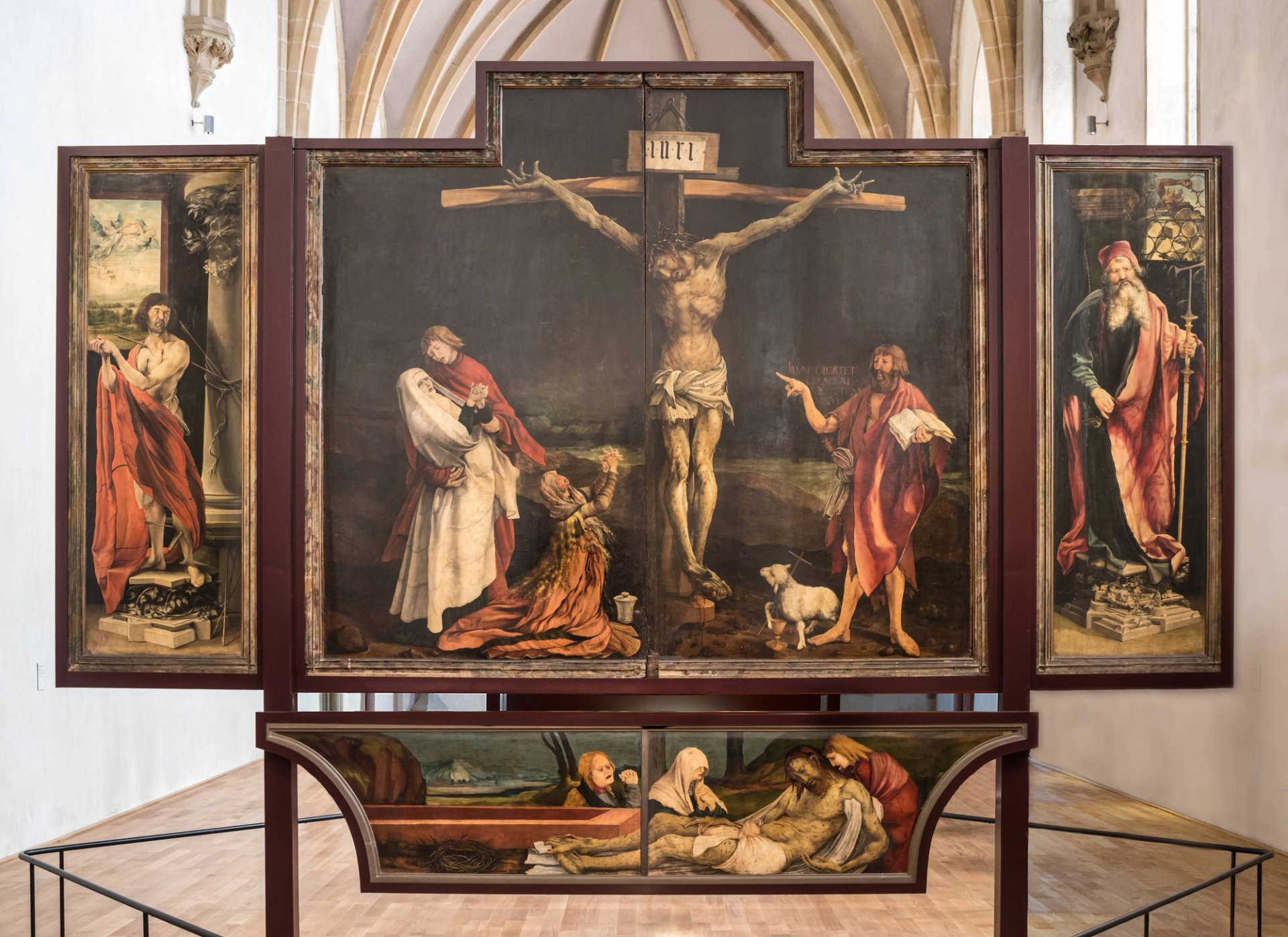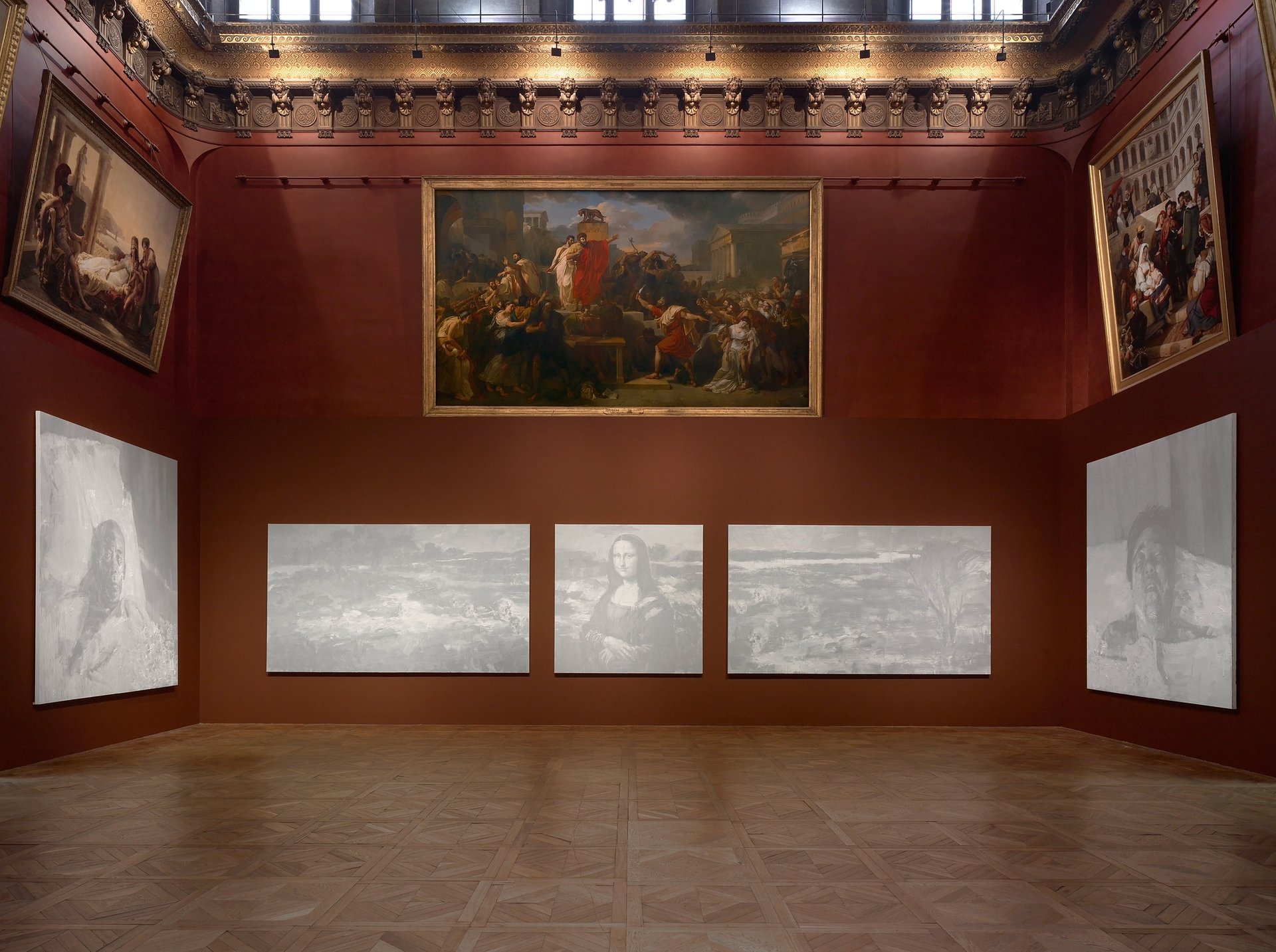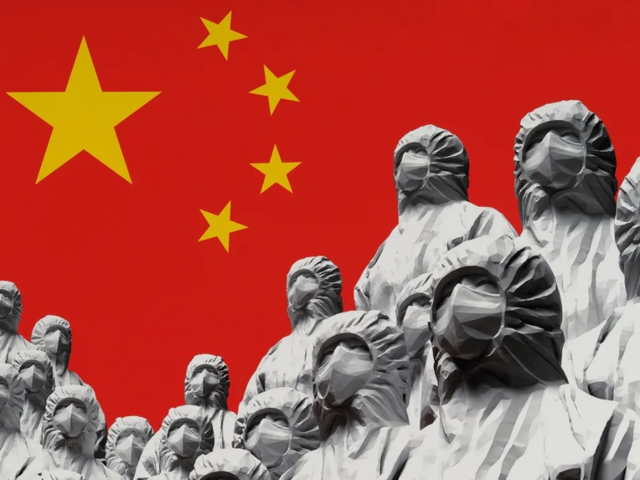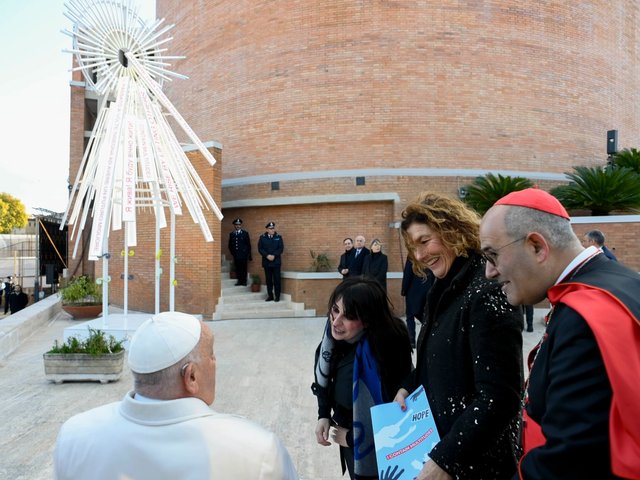The Chinese artist Yan Pei-Ming will unveil next month a vast painting focused on the Covid-19 pandemic that draws directly on the Isenheim altarpiece, a masterpiece of religious art painted between 1512 and 1516 by the German artist Matthias Grünewald.
Yan’s work, entitled Pandémie (2020), will be shown at the Musée Unterlinden in Colmar, France, as part of his first retrospective (In the Name of the Father, 2 April-6 September; subject to Covid-19 restrictions). The coronavirus-themed painting, which shows the artist standing over a corpse in a body bag, is a pendant piece in dialogue with the medieval altarpiece housed at the museum.
The 11 painted scenes on the altarpiece were commissioned by an Antonite monastery treating sick peasants and victims of the plague in Isenheim, a village south of Colmar. They include striking images of monsters and devils tormenting Saint Anthony and of Jesus’s tortured, plague-ridden body on the cross, all typical of late-Gothic art in the Rhine Valley. “From its conception, Pandémie was envisioned as a confrontation with the Isenheim Altarpiece, echoing the Crucifixion panels painted by Grünewald,” says a statement.

Matthias Grünewald's Isenheim Altarpiece (around 1515), Unterlinden Museum, Colmar Photo: © Jörgens.mi
During a studio visit on Zoom, the Shanghai-born artist explained the significance of the work. The diptych is shrouded in darkness, featuring disparate elements such as the outline of the papal basilica of St Peter in Rome, a block of modern flats and some lonely animals. The artist points out that he is the indistinct figure in the foreground surveying the deathly scene while the corpse element refers directly to the Entombment section of the Isenheim Altarpiece depicted on the predella (base).
Honing in on aspects of the painting, Yan Pei-Ming says: “This is our sickness. I give an interpretation of an era I didn’t live through and also of Covid today, an imaginary depiction. It is black, dark, the colour of coal. I am in the painting, in a mask. I am not a doctor nor a carer—what can I do to help combat Covid? There are two cats along with St Peter’s basilica in Rome; cats are often symbolically associated with healing.”
The piece was painted during the second lockdown in France from November to mid-December when a countrywide curfew was introduced. “The viewer might be shocked. It is life today. It might be painful and very hard but today the Covid pandemic has affected everyone, including myself, my family and friends. We can’t see the end—will it be in two years, five years, 20 years? [That] is unthinkable,” adds Yan Pei-Ming.

The artist Yan Pei-Ming with Self-portrait with Mask (2020) Photo: Lewis Fleury ; © Yan Pei-Ming, ADAGP, Paris, 2021
He also made other works during lockdown including Self-portrait with Mask (2020), which were shown at Thaddaeus Ropac gallery in Salzburg earlier this year. “I made self-portraits because I did not see anyone [else]. I saw myself every day. This led to the self-portraits and the other works such as the still-lifes with the skulls, the objects around me in the studio. I had time. I made paintings that were more attentive [more detailed].”
Aged 19, Yan Pei-Ming left China to study at the École Nationale Supérieure d’Art in Dijon, France, in 1980. His practice encompasses figurative, topical works that look to the Old Masters; in 2009, he was commissioned to reinterpret Mona Lisa by Leonardo da Vinci (around 1503), depicting the Renaissance icon with streaks of paint running down her face.
“At the Louvre, [former director] Henri Loyrette wanted to connect with classic painters. So I chose the Mona Lisa; every tourist sees the Mona Lisa in his or her head. It’s a painting which is special. There has never been a more popular painting than the Mona Lisa. It sums everything up,” says Yan Pei-Ming.

Les Funérailles de Monna Lisa (2008) Photo: André-Morin © Yan Pei-Ming, ADAGP, Paris, 2021
During the virtual studio visit, he also discussed his Game of Power series featuring political leaders such as Joe Biden and Angela Merkel. “This will be shown in 2022 at the Museum in Linz. It’s an ongoing series, and will include works focused on the First World War, and the assassination of Franz Ferdinand, and then Roosevelt and Stalin. It’s a painting that never ends with more than 300 parts,” he says. Still on the political theme, he adds that Brexit is a mystery. “England cannot be separated from Europe in an economical, strategic, political way, just like Germany and France.”
The forthcoming retrospective in Colmar meanwhile will show around 50 works including a drawing of his grandmother, made when he was 15, and images of his father and mother. “This is the first time that I am presenting these early works alongside paintings [spanning] 35 years,” he says.
The exhibition curator, Frédérique Goerig-Hergott, says in a statement: “The museum’s intention is to raise the veil on Yan Pei-Ming, an essential artist of Chinese origin whose figurative and expressive work, sometimes in the form of polyptychs, [presents] themes of filiation, sacrifice and the sacred that feature in the Isenheim altarpiece.”




